Plants in the form of grasses, flowers, bushes and trees transform our world, making it bright and saturated. They not only give an aesthetic appearance, but also are used by people as food and for the preparation of medicines. Among the vegetation there are many species that under the beautiful shell hide the most dangerous poisons, causing the strongest poisoning in the body.
The top 10 included the most poisonous plants in the world , which pose a serious danger to human life.
10
Wolfhound Common

Wolfhound Common is otherwise referred to as Wolf Lack or Daphne. It is a green bush up to 1.5 meters in height. The place of growth is the middle zone of Russia. The wolfberry has bright red and very attractive fruits. Death can cause only a few pieces of eaten berries. The main signs of poisoning are burning in the mouth and pharynx, increased salivation, stomach pain, vomiting with blood, diarrhea, convulsions and loss of consciousness. Lethal outcome is due to cardiac arrest. Even the juice of the berries, which has fallen on the skin, can cause serious burns, which appear as blisters and ulcers.
9
Aconite
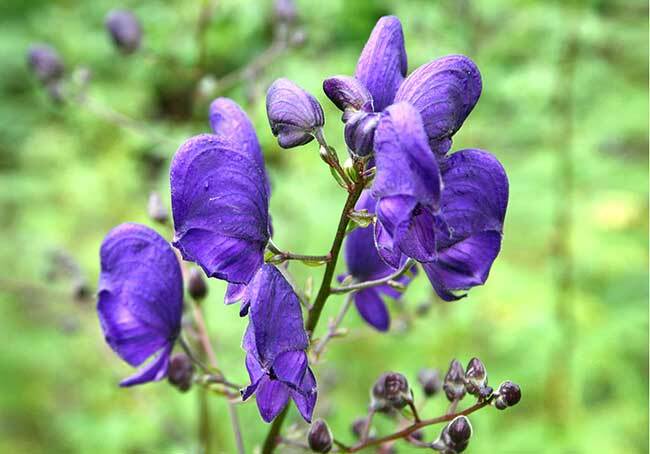
Aconite is otherwise referred to as a fighter or leopard poison. A perennial plant of the family of buttercup grows in the northern mountainous regions. In its composition, Aconite has a huge amount of poisonous substances, the most dangerous of which is aconitin. When poisoning occurs burning in the mouth, stomach, limbs, headache, faintness. In cases of dosage within 20 ml, death occurs. The poison of Aconite was used in Japan for hunting: it was applied to the arrowheads.
8
Vorony eye quadruple

Vorony eye quadruple is a plant with bright blue berries. Distributed in the forests of Siberia and the European part. The fruits of Crow eye are especially dangerous, which can lead to death. Symptoms of poisoning are convulsions, nausea and vomiting, severe headache, as well as respiratory tract paralysis and disruption of the cardiovascular system. Often berries and leaves of poisonous grass are used in folk medicine in dried form.
7
Datura
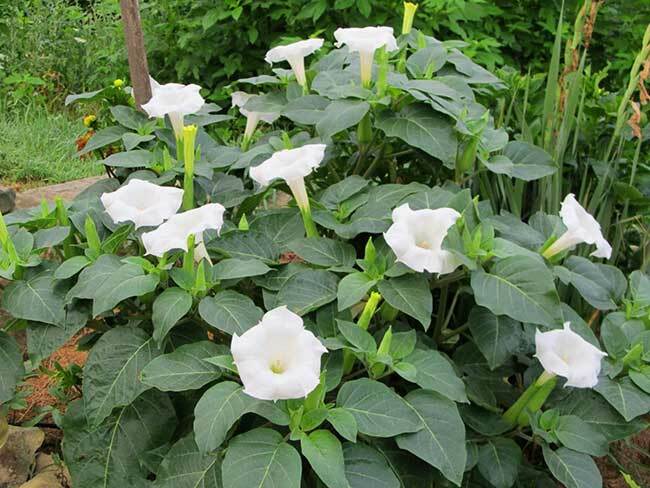
Datura or Angel Pipes is a flower ornamental plant extremely dangerous for human health and life. Distributed in many parts of the world. Datura has flowers that can be white, pink, orange and yellow. The composition of all parts includes poisonous substances: tropane, atropine, scopolamine and alkaloids, which are the strongest hallucinogens. The plant is widely used in medicine. In case of self-administration, an overdose can lead to death.
6
Poisonous poisonous
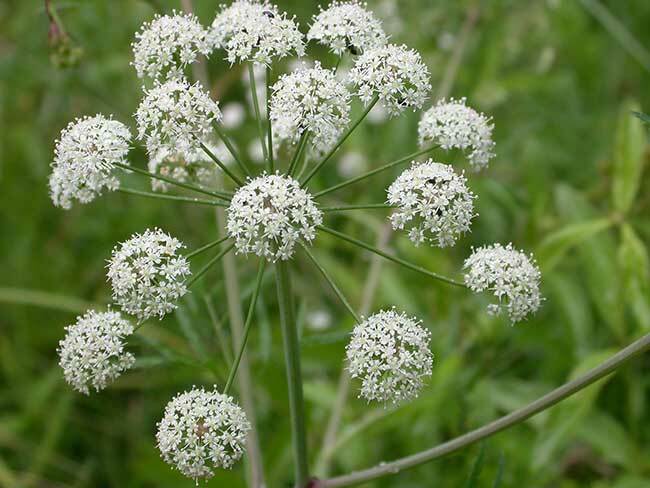
Poisonous poisonous or Water hemlock is one of the most poisonous plants. It has small white or greenish flowers, which are arranged in the form of an umbrella. Water hemlock is widespread in North America and is considered to be the most dangerous plant there. It contains a cytoxin that causes seizures. The substance is contained in all parts of the Vech, in particular in the roots. Signs of poisoning are cramps, vomiting, and abdominal pain. The lethal outcome comes in a few hours because of respiratory and heart failure.
5
Rosary Rosary
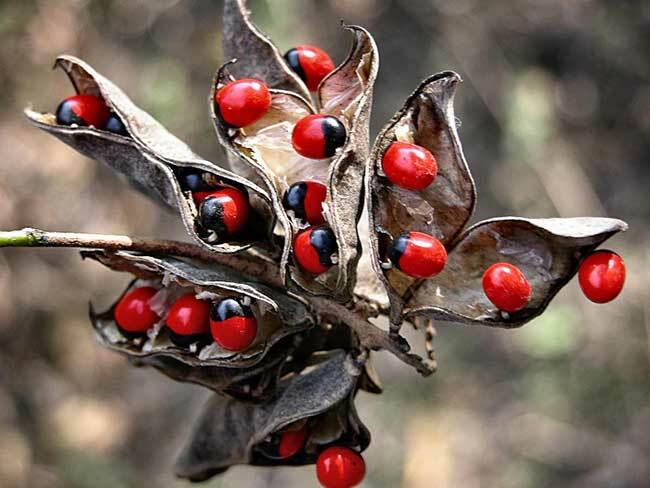
Rosary Rosary or the eye of a crab is a perennial vine, which in its composition contains a deadly poison - abrin. Only a small dose of this substance is enough to kill an adult. The plant grows in many parts of the world. Interest in the vine is due to its seeds, which have a bright red color - they are used to make beads. They also pose a threat to life, because with the slightest injury when working with seeds, a poisonous substance enters the bloodstream and death occurs.
4
Belladonna
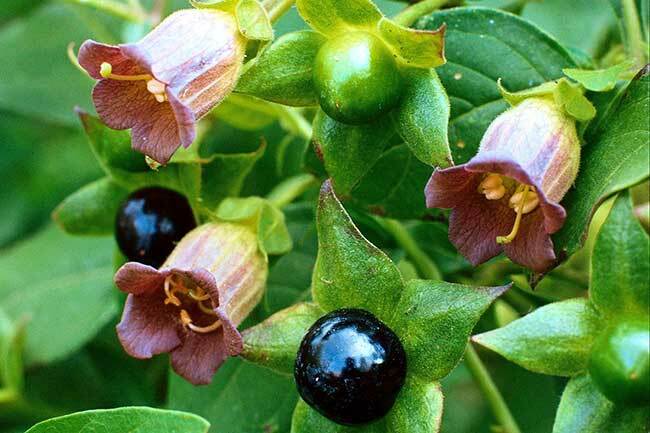
Belladonna is one of the most poisonous plants in the world, which is referred to as Ordinary, Sleepy stupid, Mad Cherry or Mad Berries. Belladonna is growing in the middle zone of Russia, North Africa and West Asia. In its composition, it has such poisonous substances as the alkaloids of the atropine group, which can cause delusions and hallucinations in humans. The first symptoms that indicate poisoning are manifested in the form of dry mouth, loss of voice, difficulty breathing, convulsions and headache. Blue-purple berry bushes, similar to cherries, have a sweet taste. Eaten 10 fruits can lead to death. In ancient times, the juice of berries was used by women as drops for the eyes to dilate the pupils and give shine.
3
Curare
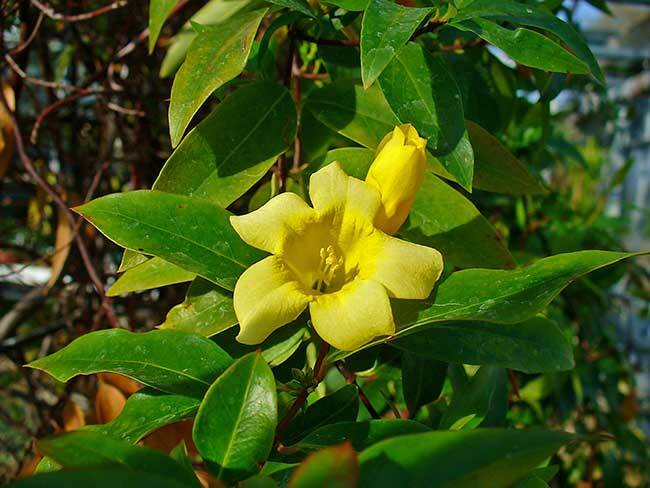
Curare is one of the most poisonous lianas, which in its structure resembles a tree. The plant has a juicy small fruit of green color. Curare is common in South America. His poisonous action was first discovered by Indians, who began using his juice as a poison for arrows. Dangerous substances act primarily on the respiratory system of a living being, paralyzing it. Death comes as a result of suffocation. Return the person to life with minor doses of poison can be with the help of artificial respiration. Poisonous substances from the body are excreted by the kidneys. Serious poisoning can be obtained even with a slight scratches on the body, where the poison can enter.
2
Mancinella tree
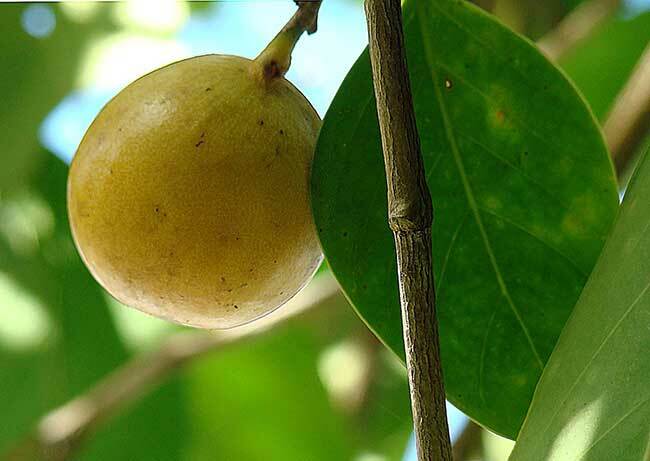
Mancinella tree or Mantzenella is one of the most poisonous trees on the planet of the family "molochine".Its habitat is directly Central America. The fruits of Mancenella are called "apples of death".Toxic are not only fruits, but also bark and tree juice, which contain forbol. A simple touch to the trunk is enough to cause an allergic reaction to the skin. When the poison enters the plant, death inevitably occurs. The ingress of juice on the skin can also cause death and blindness in case of contact with the eyes.
1
Plaque ordinary

Plaque ordinary or Castor plant was recorded in the Guinness Book of Records as the most poisonous plant in the world. Kleshchevina is a tree and can reach a height of 10 meters. The place of its growth is China, Egypt, Iran, Argentina and Brazil. Castor plant contains the most dangerous poison - ricin, concentrated in fruits. Receiving only one seed leads to a painful death of a person, which occurs within a few days. Symptoms of poisoning are expressed in the burning sensation in the mouth and throat area, pain in the abdomen, vomiting and diarrhea with blood. This process is irreversible and a person dies from dehydration. However, seeds are used to produce castor oil, which is not hazardous to health, since all toxic substances remain in the pomace fruit.



